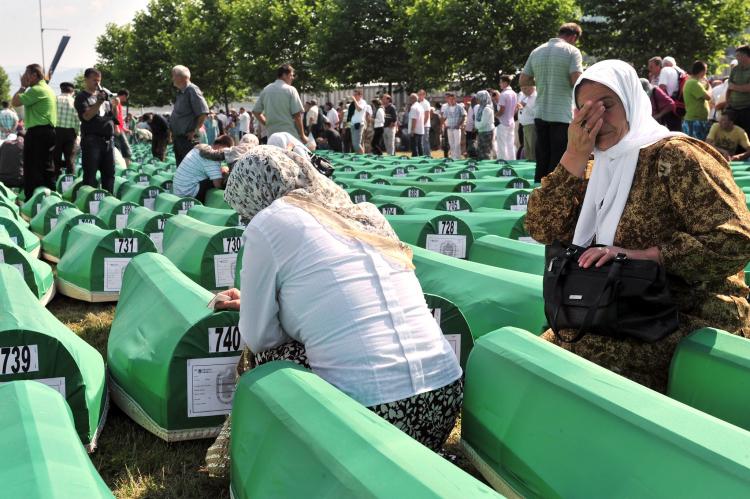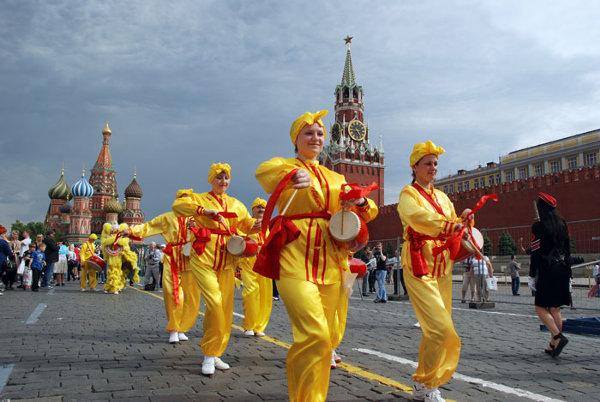Tens of thousands of grieving Bosnian Muslims gathered on Sunday in Srebrencia to bury hundreds of victims killed in a massacre. The massacre occurred in the eastern town of Srebrenica 15 years ago when Bosnian Serbs overran the United Nations safe havens.
Nearly 8,000 Muslim men and boys were killed in the massacre, becoming the most notorious episode of the 1992-1995 Balkan conflict.
Bosnian Serb Gen. Ratko Mladic, was in command of the massacre, which came after the issue of a “supreme command directive” in March 1995 by then Serb President Radovan Karadžic. The directive forced Bosnian Muslims in Srebrenica and Žepa to leave the enclaves.
The 775 newly identified victims were buried along with the 4,000 people who had already been laid to rest at the at the Potocari cemetery, outside of Srebrenica. The newly discovered bodies were excavated from mass graves and were identified through DNA tests.
After the massacre, Serb troops interred all dead bodies in mass graves, but several months later the troops dug out the original graves with bulldozers and took the bodies to another location in an attempt to conceal the evidence of the atrocities.
Srebrenica and Žepa had been declared safe havens for civilians by the U.N. two years before the massacre, but both of the locations were overrun by Bosnian Serb forces.
Both wartime leaders were indicted with genocide by the International Criminal Tribunal for the former Yugoslavia in 1995.
However, Mladic is still at large and believed to be hiding in Serbia, while Karadzic is on trial at the tribunal in The Hague and has denied all accusations.
Karadzic had been on the run for 13 years before being arrested in July 2008. He had assumed a fake identity as an alternative medicine doctor.
The tribunal also indicted 21 other Serbs officials for crimes committed in Srebrenica at the time.
There were no the U.N. representatives at the funeral ceremony. Serbian President Boris Tadic arrived at the event saying he came in an “act of reconciliation,” according to the Associated Press.
Nearly 8,000 Muslim men and boys were killed in the massacre, becoming the most notorious episode of the 1992-1995 Balkan conflict.
Bosnian Serb Gen. Ratko Mladic, was in command of the massacre, which came after the issue of a “supreme command directive” in March 1995 by then Serb President Radovan Karadžic. The directive forced Bosnian Muslims in Srebrenica and Žepa to leave the enclaves.
The 775 newly identified victims were buried along with the 4,000 people who had already been laid to rest at the at the Potocari cemetery, outside of Srebrenica. The newly discovered bodies were excavated from mass graves and were identified through DNA tests.
After the massacre, Serb troops interred all dead bodies in mass graves, but several months later the troops dug out the original graves with bulldozers and took the bodies to another location in an attempt to conceal the evidence of the atrocities.
Srebrenica and Žepa had been declared safe havens for civilians by the U.N. two years before the massacre, but both of the locations were overrun by Bosnian Serb forces.
Both wartime leaders were indicted with genocide by the International Criminal Tribunal for the former Yugoslavia in 1995.
However, Mladic is still at large and believed to be hiding in Serbia, while Karadzic is on trial at the tribunal in The Hague and has denied all accusations.
Karadzic had been on the run for 13 years before being arrested in July 2008. He had assumed a fake identity as an alternative medicine doctor.
The tribunal also indicted 21 other Serbs officials for crimes committed in Srebrenica at the time.
There were no the U.N. representatives at the funeral ceremony. Serbian President Boris Tadic arrived at the event saying he came in an “act of reconciliation,” according to the Associated Press.






